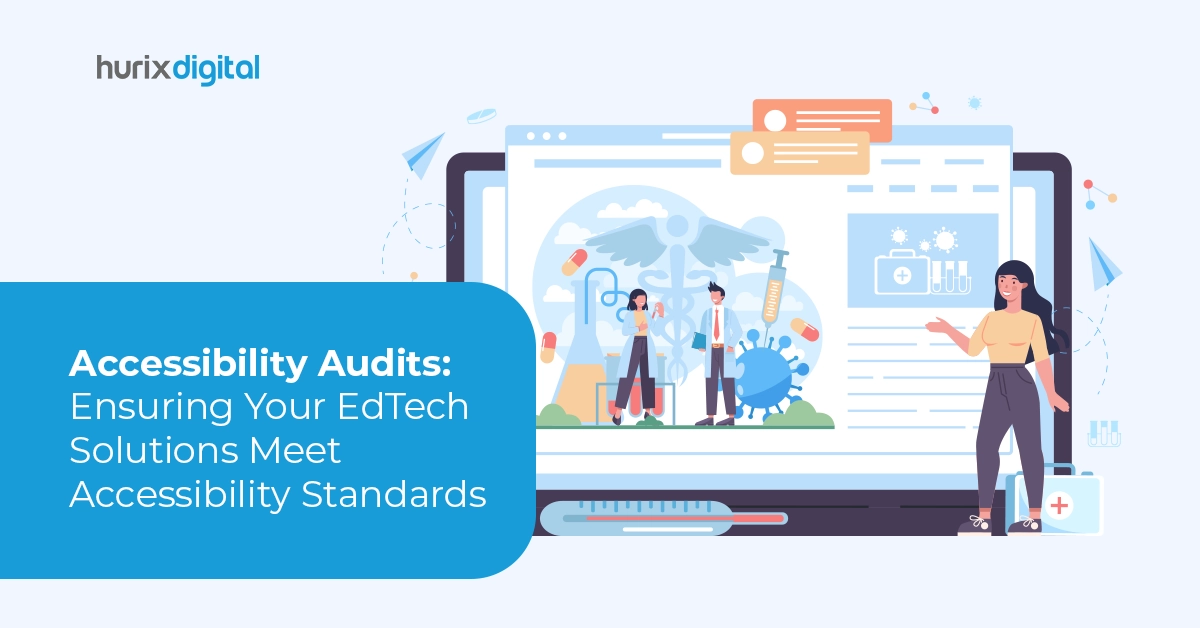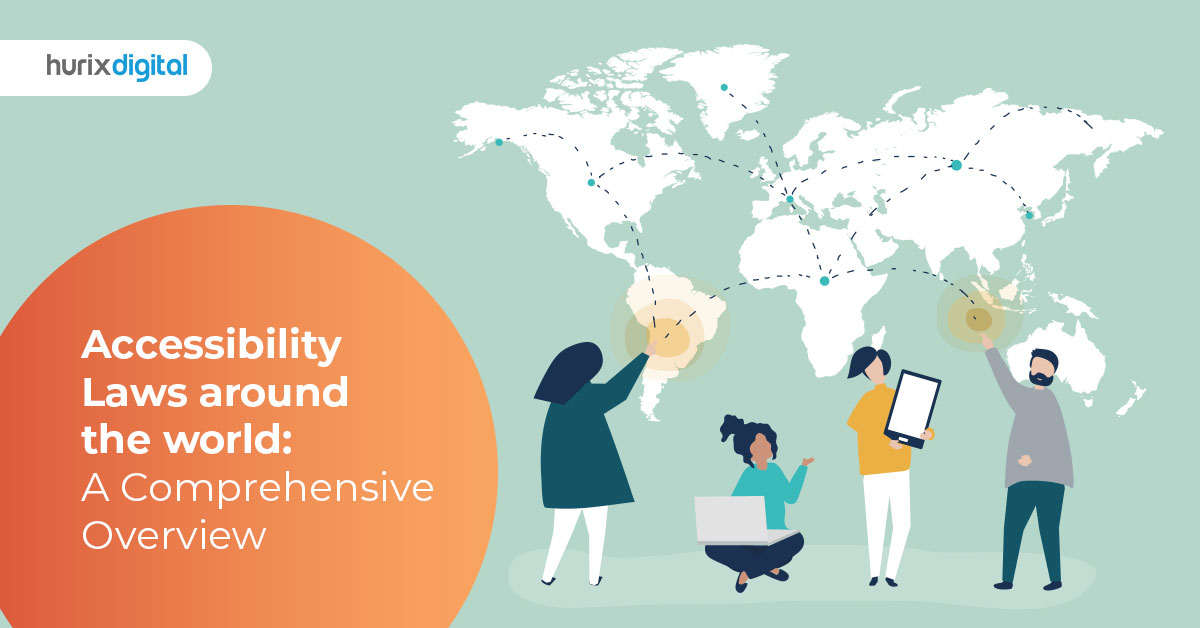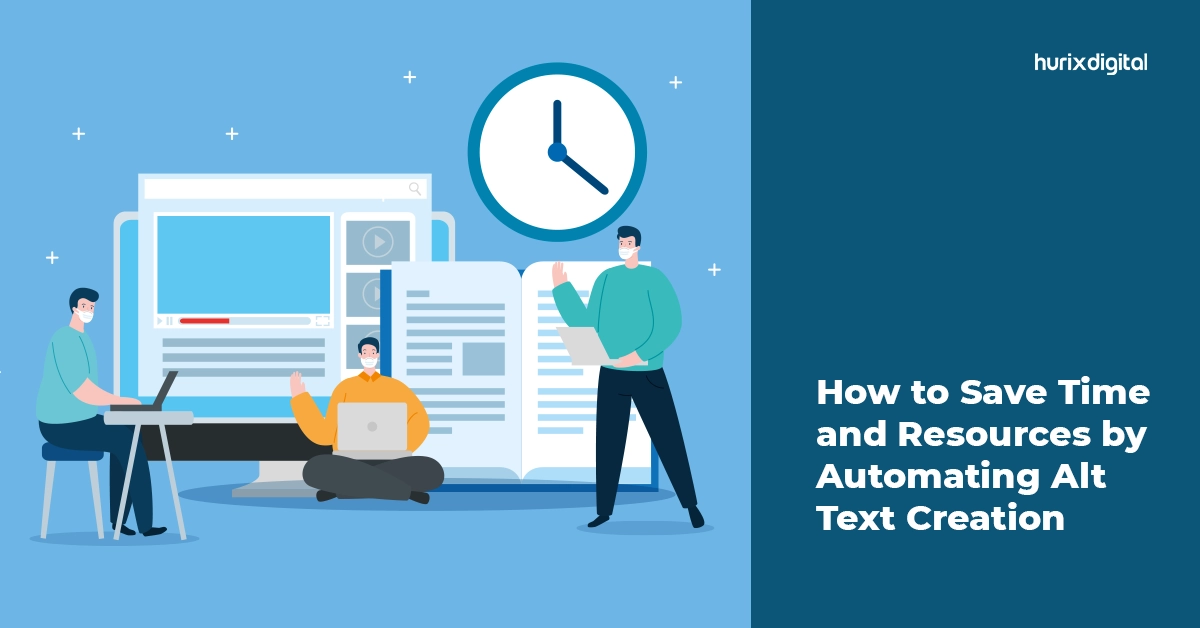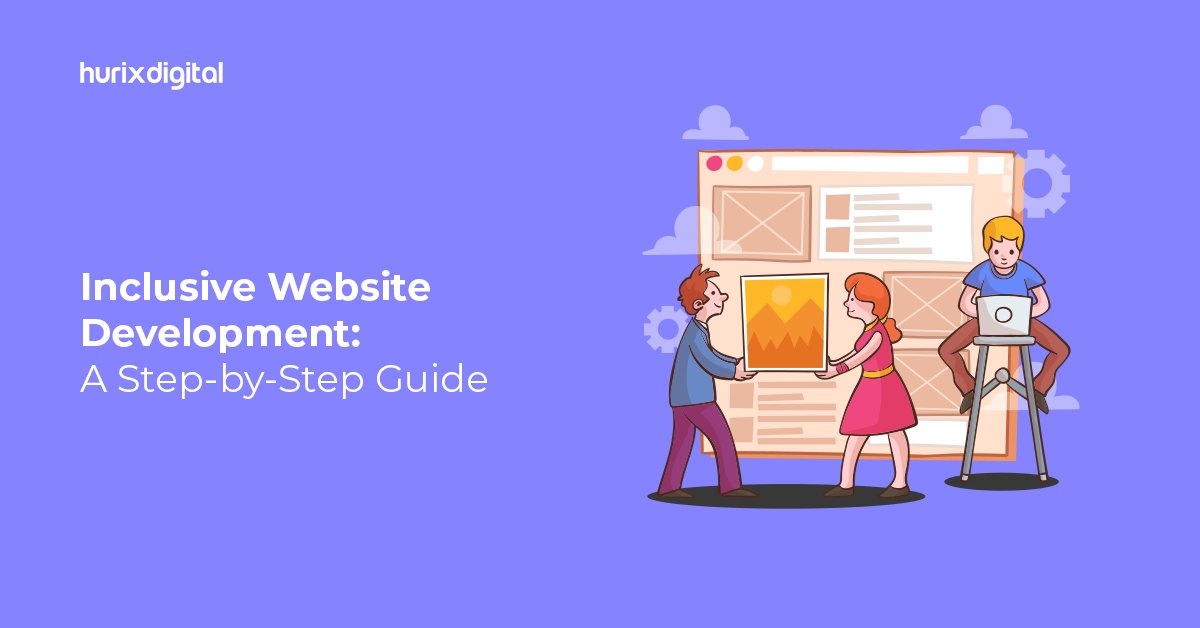
Accessibility Audits: Ensuring Your EdTech Solutions Meet Accessibility Standards
Summary
Discover the importance of accessibility audits for EdTech solutions. This article offers guidance on ensuring your educational technologies comply with accessibility standards.
Since the advent of contemporary educational technology solutions, approaches to teaching and learning have undergone significant transformations. Students now have access to course materials in various formats, including screen readers and text-to-speech software, and instructors can engage with them digitally rather than in person.
These educational possibilities are also great EdTech accessibility solutions since they let students who are physically or mentally limited engage fully in the curriculum.
Table of Contents:
- What Does the Web Accessibility Audit Refer to?
- Understanding Accessibility in EdTech
- Why are Accessibility Audits Important?
- How to Conduct an Accessibility Audit?
- Wrapping Up
What Does Web Accessibility Audit Refer to?
A web accessibility audit verifies that individuals with cognitive and physical limitations can easily navigate a webpage.
The process involves a thorough evaluation of the website and a comparison with online accessibility standards like the WCAG recommendations. An additional phase involves assessing the website’s accessibility for many types of disabilities, such as visual, linguistic, neurological, physical, cognitive, or aural impairments.
The recommended method for guaranteeing accessibility in EdTech solutions is frequently to do thorough accessibility audits.
These audits ensure that all users, regardless of their abilities, can interact with instructional content effortlessly while confirming adherence to established standards such as WCAG.
Understanding Accessibility in EdTech
Like other websites and digital platforms, EdTech solutions must adhere to digital accessibility requirements to ensure that all students can easily access and utilize the material.
This includes, but is not limited to:
- Visual Accessibility: Ensuring content is perceivable through alternative formats like screen readers and text-to-speech tools.
- Auditory Accessibility: Providing captions and transcripts for audio content.
- Motor Accessibility: Supporting keyboard navigation and ensuring interactive elements are operable without a mouse.
- Cognitive Accessibility: Designing interfaces that are clear, consistent, and easy to navigate.
Also Read: Section 508 Accessibility Standards: Key Guidelines, Significance and More!
Why are Accessibility Audits Important?
Accessibility audits are crucial in ensuring digital accessibility and pinpointing areas needing improvement within educational technology.
1. Legal Compliance
Many nations have laws requiring digital products to be accessible by incorporating assistive technology and features.
For example, the Rehabilitation Act’s Section 508 and the Americans with Disabilities Act (ADA) specify accessibility standards for federal services and programs, including those offered to US educational institutions that receive federal funding.
2. Creating Inclusive Learning Environments
Ensuring the user-friendliness of EdTech platforms facilitates equal participation in learning activities by students with varying abilities. This encourages the development of a more diverse learning environment where each student can succeed.
Additionally, accessibility audits allow teachers to identify areas for improvement and barriers to learning and create an inclusive learning space for all students.
3. Enhancing Reputation
Adhering to accessibility guidelines might seem easy, but it requires great effort and an advanced technological skillset.
Consequently, educational institutions and platforms that do regular accessibility testing and proactively work towards providing an inclusive learning environment to their students create a high reputation in the industry and attract a more diverse student body and teachers.
4. Improving Search Engine Optimization
Another positive aspect of conducting accessibility audits for EdTech solutions is improving SEO ranking.
Search engines automatically rank accessible websites and digital platforms higher than non-accessible ones. This dual benefit enhances usability and boosts visibility in search engine results, contributing to a more inclusive and widely accessible educational experience.
How to Conduct an Accessibility Audit?
Here are steps to follow for conducting an effective accessibility audit for your EdTech solutions:
1. Select Sample Pages
While conducting the accessibility audit, it is not necessary to audit every website page. You can select some sample pages and check them to ensure they are accessible.
The sample pages can include some of a website’s important pages, such as the homepage, contact pages, legal information, etc.
However, regarding educational platforms, all the information, learning, and text content must also be checked for accessibility. While checking the text content, focus on headings, font size, font color, and background color.
2. Check Evaluation Criteria
Indicate which accessibility guidelines and standards your EdTech solution has to follow. This often includes international standards such as the Web Content Accessibility Guidelines (WCAG), developed by the World Wide Web Consortium (W3C).
These recommendations offer specific standards for ensuring that web material is accessible to individuals with disabilities.
3. Use Testing Tools
Use automated accessibility testing tools to find frequent problems, such as poor color contrast, missing alternate text for images, and navigational difficulties.
By doing this, you’ll speed up the testing process and have more time to focus on some of the more complex and specialized aspects of accessibility audits.
4. Conduct Manual Testing
Use automated accessibility testing tools to identify common issues such as low color contrast, missing alternate text for images, and navigational challenges. This will expedite the testing process and allow you to concentrate on some of the intricate and specialized components of accessibility audits.
Moreover, it is essential to combine manual testing with automated technologies. Manual testing entails using tools like screen readers to interact with specific sample websites to verify compatibility.
This procedure is essential for identifying small difficulties with accessibility, like keyboard accessibility, logical reading sequence, and appropriate ARIA roles, that automated tools could overlook.
Also Read: Navigating Accessibility Standards: A Comprehensive Guide to WCAG & Web Content Accessibility
Wrapping Up
Disability accommodations in EdTech solutions are fundamental to creating an inclusive learning environment for students with all learning needs.
Switching to a more deliberate approach to accessibility takes relatively little effort. However, remembering that achieving web accessibility is a lengthy process is essential.
If you are also looking to start your web accessibility journey with your EdTech solution, Hurix Digital can help. We can help you incorporate cutting-edge AI products into your EdTech solutions to nurture more efficient, accessible, inclusive, and impactful growth.
Contact our team now to collaborate and succeed together!

Vice President – Digital Content Transformation. He is PMP, CSM, and CPACC certified and has 20+ years of experience in Project Management, Delivery Management, and managing the Offshore Development Centre (ODC).








